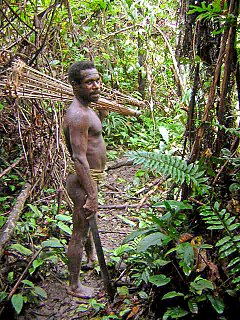This article is about the demographic features of the population of Equatorial Guinea, including population density, ethnicity, education level, health of the populace, economic status, religious affiliations and other aspects of the population.
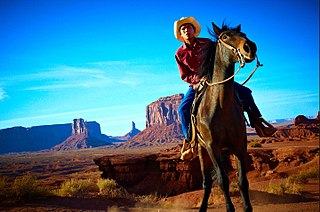
Indigenous peoples, also known as first peoples, aboriginal peoples or native peoples, are ethnic groups who are the original settlers of a given region, in contrast to groups that have settled, occupied or colonized the area more recently. Groups are usually described as indigenous when they maintain traditions or other aspects of an early culture that is associated with a given region. Not all indigenous peoples share this characteristic, as many have adopted substantial elements of a colonizing culture, such as dress, religion or language. Indigenous peoples may be settled in a given region (sedentary) or exhibit a nomadic lifestyle across a large territory, but they are generally historically associated with a specific territory on which they depend. Indigenous societies are found in every inhabited climate zone and continent of the world.

The Maya peoples are a large group of indigenous peoples of Mesoamerica. They inhabit southern Mexico, Guatemala, Belize, El Salvador and Honduras. The overarching term "Maya" is a collective designation to include the peoples of the region that share some degree of cultural and linguistic heritage; however, the term embraces many distinct populations, societies and ethnic groups that each have their own particular traditions, cultures and historical identity.

Equatorial Guinea's culture has been less documented than most African countries, and commercial recordings remain scarce.
Cultural assimilation is the process in which a minority group or culture comes to resemble those of a dominant group. The term is used to refer to both individuals and groups; the latter case can refer to a range of social groups, including ethnic minorities, immigrants, indigenous peoples, and other marginalized groups such as sexual minorities who adapt to being culturally dominated by another societal group.

Mexicans are the people of the United Mexican States, a multiethnic country in North America.

Spanish Guinea was a set of insular and continental territories controlled by Spain since 1778 in the Gulf of Guinea and on the Bight of Bonny, in Central Africa. It gained independence in 1968 and is known as Equatorial Guinea.
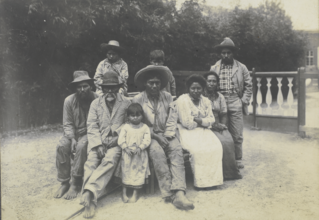
The Kaingang people are a Native American ethnic group spread out over the three southern Brazilian states of Paraná, Santa Catarina and Rio Grande do Sul and the southeastern state of São Paulo. They are also called Caingang and Aweikoma, though the Kaingang and Aweikoma (Xokleng) are now considered separate groups. The Kaigang people were the original first inhabitants of the province of Misiones in Argentina. Their language and culture is quite distinct from the neighboring Guaraní.

Uncontacted peoples, also referred to as isolated people or lost tribes, are communities who live, or have lived, either by choice or by circumstance, without significant or first contact with greater civilization. Few people have remained totally uncontacted by modern civilization.
Russia is a multi-national state with over 186 ethnic groups designated as nationalities; the populations of these groups vary enormously, from millions to under 10,000.

Brazilians are citizens of Brazil. A Brazilian can also be a person born abroad to a Brazilian parent or legal guardian as well as a persons who acquired Brazilian citizenship. Brazil is a multiethnic society, which means that it is home to people of many different ethnic origins. As a result, majority of Brazilians do not equate their nationality with their ethnicity, usually embracing and espousing both simultaneously.
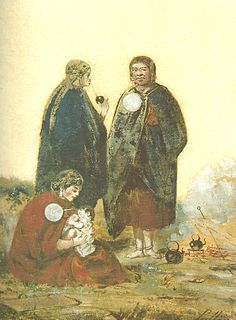
Argentina has 35 indigenous groups or Argentine Amerindians or Native Argentines, according to the Complementary Survey of the Indigenous Peoples of 2004, in the first attempt by the government in more than 100 years to recognize and classify the population according to ethnicity. In the survey, based on self-identification or self-ascription, around 600,000 Argentines declared to be Amerindian or first-generation descendants of Amerindians, that is, 1.49% of the population. The most populous of these were the Aonikenk, Kolla, Qom, Wichí, Diaguita, Mocoví, Huarpe peoples, Mapuche and Guarani In the 2010 census [INDEC], 955,032 Argentines declared to be Amerindian or first-generation descendants of Amerindians, that is, 2.38% of the population. Many Argentines also claim at least one indigenous ancestor: in a recent genetic study conducted by the University of Buenos Aires, more than 56% of the 320 Argentines sampled were shown to have at least one indigenous ancestor in one parental lineage and about 11% had indigenous ancestors in both parental lineages.
Benga people are an African ethnic group, members of the Bantu group, who are indigenous to Equatorial Guinea and Gabon. Their indigenous language is Benga. Today Bengas inhabit a small coastal portion of Rio Muni, the Cape of San Juan, suburban enclaves of Rio Benito and Bata, the islands of Corisco, and both Small Elobey and Great Elobey. They are referred to as Ndowe or "Playeros", one of several peoples on the Rio Muni coast.
Kombe people are an African ethnic group, members of the Bantu group, who are indigenous to Equatorial Guinea. They are native speakers of the Kombe language.
Lengue people, or Balengue, are an African ethnic group, members of the Bantu group, who are indigenous to Equatorial Guinea and Gabon. Their indigenous language is Lengue. Today Bengas inhabit the coast region of the country's mainland, between Bata and the Gabonese border. This ethnic group has become increasingly influence by Fang culture during the past couple of decades; but have maintained their linguistic identity. They are referred to as Ndowe or "Playeros", one of several peoples on the Rio Muni coast.

Quinsaloma Canton is a canton of Ecuador, located in the Los Ríos Province. Its capital is the town of Quinsaloma.
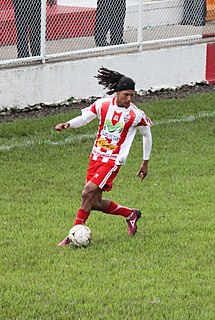
Afro-Nicaraguans are Nicaraguans of African descent in Nicaragua. They make up 9% of the population and they're the largest group of African descent in in Central America. Numbering almost 600,000, according to the CIA factbook (2011), they primarily live on the southeastern coast, the Mosquito Coast, Bluefields and Managua. The 1990 Nicaraguan national census recorded 25,000 or 1% of the population. Creoles are from the Anglo-Caribbean and speak a dialect of Jamaican patois known as Miskito Coast Creole. Nicaragua also has a Garifuna population.

The Tariana or Taliaseri are an indigenous people of the Vaupés or Uaupés River in the Amazon region of Brazil and Colombia. Starting in the 19th century missionaries tried to persuade them to abandon their traditional beliefs and practices, with some level of success. The government made efforts to convert them to a "colony" system in exchange for health, education and economic benefits starting in the 1980s. They are now relatively autonomous within several indigenous territories.
